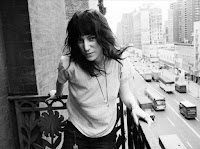I have never been a great one for Christmas albums. I think I have only bought two of them previously, The Beach Boys Christmas album when I was about fifteen, back in the 1960’s, and Sweet Bells by Kate Rusby a few years ago at her Christmas show in Bath. However, when I saw this album quite a while ago in a shop in Warminster I had to buy it. It is The Spirit of Christmas by Pee Wee Ellis. As you probably know Pee Wee was the saxophone player, arranger, and music director in Van Morrison’s band for many years. That is one reason I bought the CD, the other reason is because I had the pleasure of meeting Pee Wee in Bradford On Avon fifteen years ago, and you couldn’t meet a nicer person. I was very sorry to hear that he had passed away in September 2021. When I bought the album, I didn’t play it for months, but today I remembered it and thought now was the right time to give it a good listen.
Pee Wee is joined on the album by his old friend from James Brown and the J.B. Horns Fred Wesley on trombone. Also, Clare Teal who Van Morrison fans will know from his Duets album. Clare has also been an occasional guest of Van on stage. I remember seeing her at Glastonbury Abbey and the Royal Albert Hall. Both she and Pee Wee lived in the West Country which might be why they worked together so often. On piano and keyboards is Jason Rebello who I think is also based locally in Bath. Gary Winters is on trumpet, Tony Remi on guitar, Patrick Scales on bass, and Guido May on drums. This album was made in Cologne in 2013, and I think some of the other musicians might be based in Germany because I had never heard of Lisa Bassenge, Lillian Boutte, or Peter Fessler before, but they are all great singers. I see on the sleeve notes that the production co-ordinator is Pee Wee’s wife Charlotte.
The album opens with Have Yourself A Merry Little Christmas with Clare on vocals. Rudolf The Red Nosed Reindeer is presented here as a jazz instrumental arranged by trumpet player Gary Winters and some passages in it are reminiscent of A Kind of Blue by Miles Davis. The George Michael song Last Christmas doesn’t sound like Wham here. It has become a jazz song with Peter Fessler scatting away to his hearts content. Christmas In New Orleans was originally popularised by Louis Armstrong, but here it is sung by Lillian Boutte and she does a wonderful job of it. Christmas Time Is Here was written by Vince Guaraldi who you will know from Cast Your Fate To The Wind, but he wrote this tune in 1965 for a TV show called A Charlie Brown Christmas. Pee Wee’s arrangement features some wonderful piano playing by Jason Rebello.
In The Upper Room was written by a great American lady called Lucie E Campbell who was a civil rights activist as well as a composer of hymns. Lillian Boutte sings this great gospel song and Pee Wee performs an excellent solo on tenor sax. Here, In The Bleak Midwinter is transformed by a bluesy arrangement with guitar and trumpet to the fore. Ezekiel Saw The Wheel is a lively upbeat song by Lillian. White Christmas is sung by Peter who also plays acoustic guitar on this track. Van fans will know bass player Laurence Cottle from his contributions to Van’s Keep Me Singing and Roll With The Punches albums. Here he arranges Snowfall written by Claude Thornhill.
Stille Nacht (Silent Night) is sung here as a jazz arrangement in the original German by Lisa Bassenge. Pee Wee again plays a wonderful solo (See video below). Clare returns to sing What Are You Doing New Year’s Eve? Written by Frank Loesser who you will know from such songs as Baby Its Cold Outside and Let’s Get Lost. Jason excels himself on piano on this track. The album officially comes to a close with The Christmas Song which was written by Robert Wells and Mel Torme. I thought the album was finished, but after about a minute of silence the band return for a jam session which I’ll call Merry Christmas. I really enjoyed hearing this excellent album today on a cold December afternoon. I’m not sure if it is still available, but I’m sure you could track down a copy. If you like Christmas and great soulful jazz music, then this could be just what you need.


























































